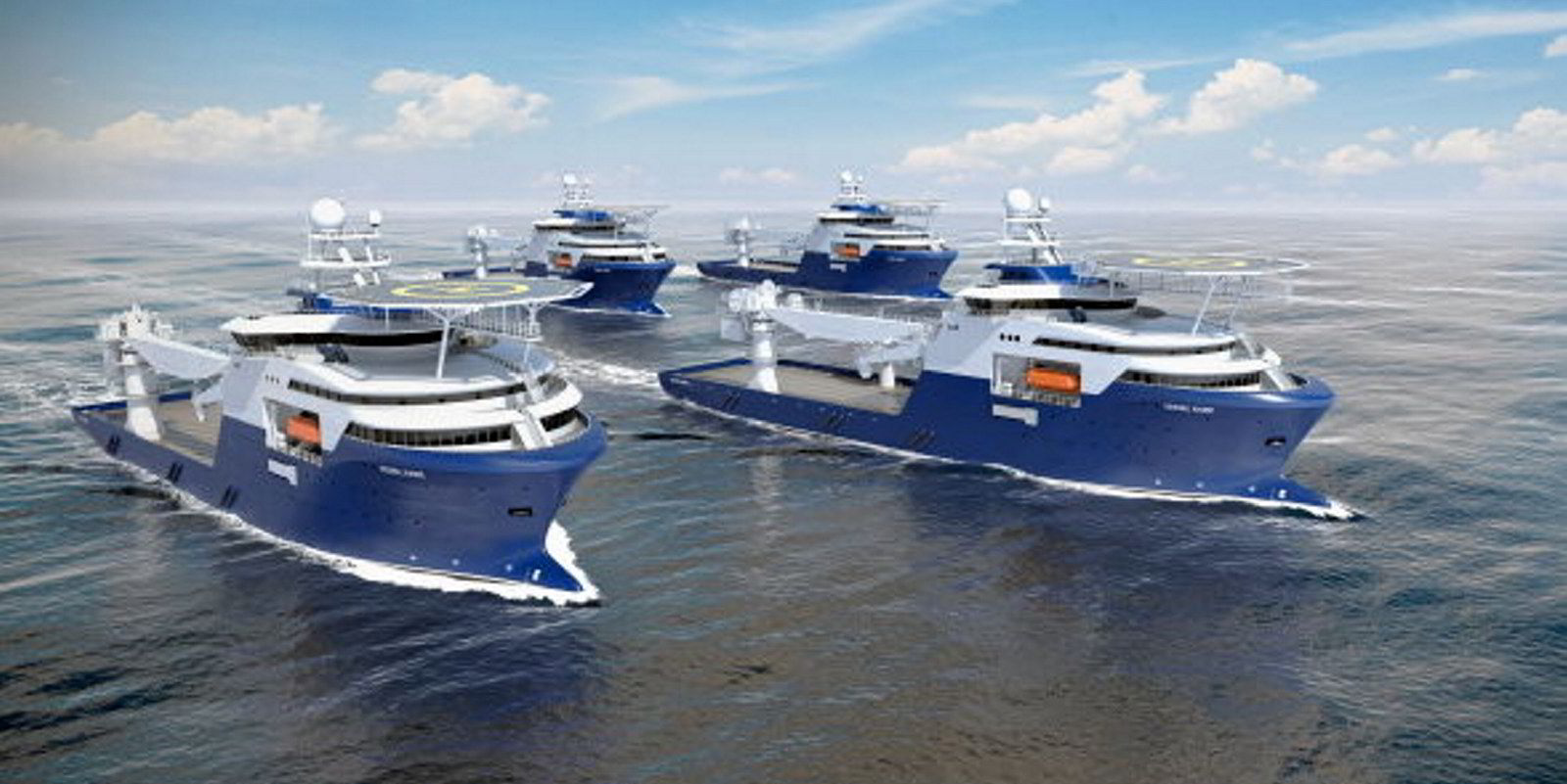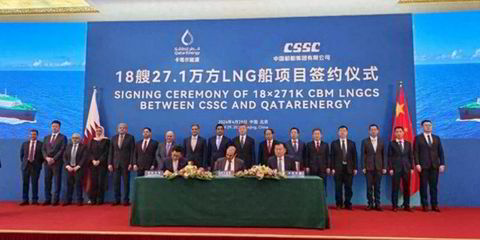A couple of big names have been suggested as the owner behind a significant order for offshore construction vessels (OCVs) in China.
Norway’s Salt Ship Design announced on Thursday that an “undisclosed first-class European shipowner” had contracted two firm ships with two options at Wuchang Shipbuilding Industry Group.
The vessels are a further development of the Salt 305 design previously built by the same shipyard, the Stord-based company said.
“Salt Ship Design will provide an extensive design package for the vessels, including detail design,” Salt added.
The new Salt 0494 OCVs are prepared for alternative fuel, and a large battery package will be included, the designer said.
No price has been disclosed for the ships.
Some brokers were staying tight-lipped on the deal, while others have pointed to either Oslo-listed Solstad Offshore, compatriot DOF Group or John Fredriksen’s private Seatankers group as being behind the order.
Solstad, controlled by Norwegian tycoon Kjell Inge Rokke, has a substantial fleet of subsea support and construction vessels.
The same is true for Oslo-listed DOF, which counts Fredriksen as a major shareholder.
Fredriksen’s Seatankers has sold two platform supply vessels this year and retains an accommodation unit among its fleet of bulkers.
There are also VLCCs, product tankers and kamsarmax bulkers on order in China.
DOF chief executive Mons Aase told TradeWinds that as a listed company, it would have to inform the market about any such news. “We have not sent a release,” he added.
One possibility is that DOF and Solstad are still at the bidding stage for the management of the vessels ordered by Seatankers.
Solstad and Seatankers have also been contacted for comment.
Rem Offshore adds one to orderbook
On the same day, Norway’s Rem Offshore announced an order for a net zero-emission OCV.
The Fosnavag-based owner said the ship would run on methanol and batteries and would be able to work on both conventional oil projects and offshore wind.
The vessel is slated for delivery in 2026.
The OCV will have a 250-tonne crane that will run on electricity and recharge the vessel’s battery. An offshore gangway can be installed for use in offshore wind.
The unit will be constructed at Myklebust Verft shipyard in central Norway.





